This aircraft collection was established by Mr. Pearce Dunn in 1968, on the site of the former wartime RAAF Station Mildura,
adjacent to the current Mildura Airport passenger terminal. Pearce was a former RNZAF aircraft fitter, who migrated from New Zealand to Melbourne and commenced looking for aircraft to start his planned museum.
I took these early-days photographs during a visit in June 1972.
Warbirds Aviation Museum saved many more aircraft, before economics forced its closing in the late 1980s

Pearce personally ran his museum without committees, but with the help of loyal supporters.
The sign recognises RAAF No.2 Operational Training Unit based here during WWII
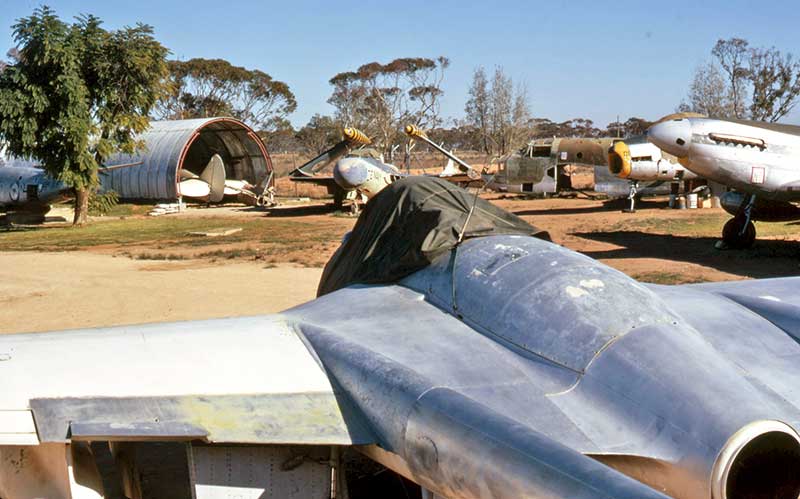
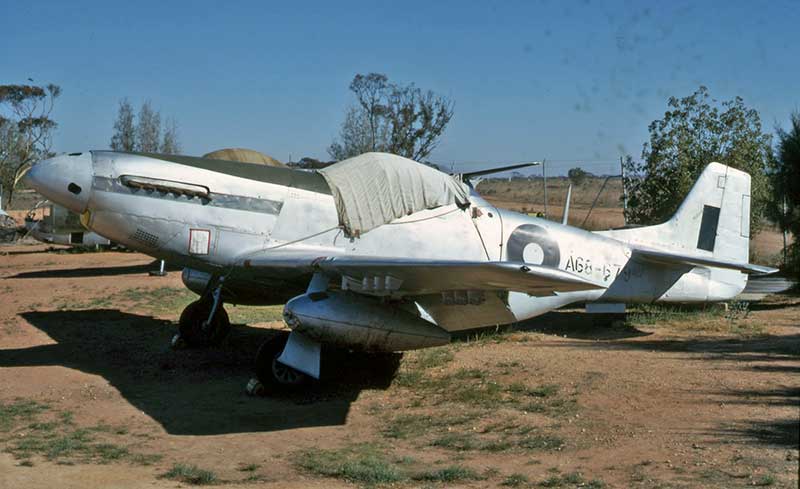
North American P-51D Mustang A68-679 was assembled by Pearce after two derelict fuselages were found at Benalla Vic.
A68-679 was sold to USA in 1981 to raise funds for a museum display building, and flies there today as racer N71FT Strega

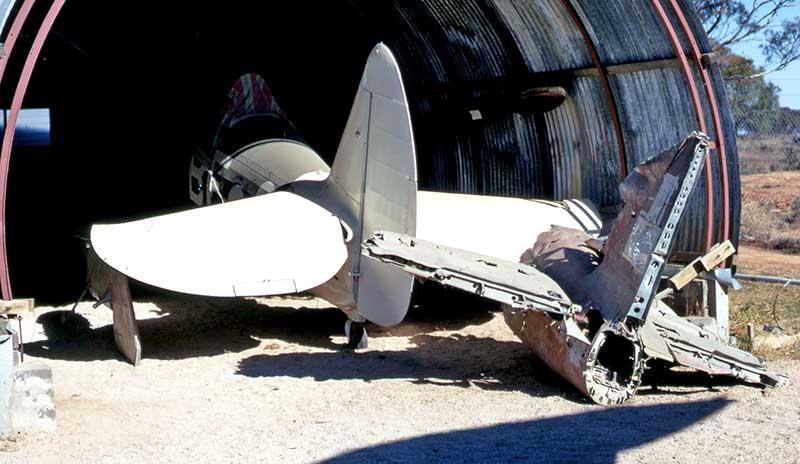
This Wirraway later moved between a number of warbird enthusiasts and survives today.
The tail section in the foreground came from a Japanese Zero fighter
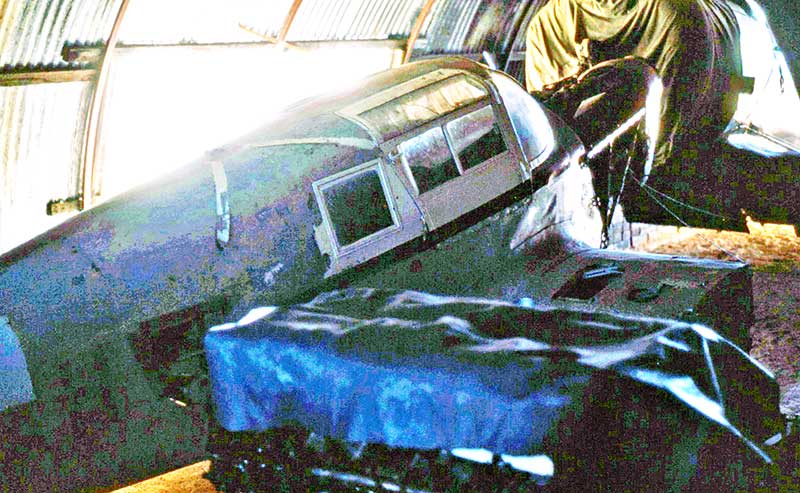

This Wirraway restoration project is believed to be A20-233, which was later swapped with the Swedish Flygvapenmuseum
at Linkoping. In Sweden it was rebuilt to represent a Swedish Air Force NA-16 which had the Swedish designattion Sk 14A
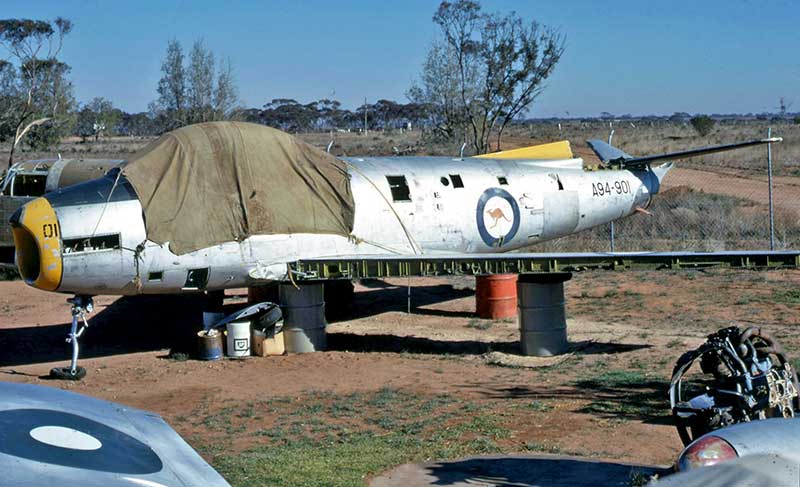
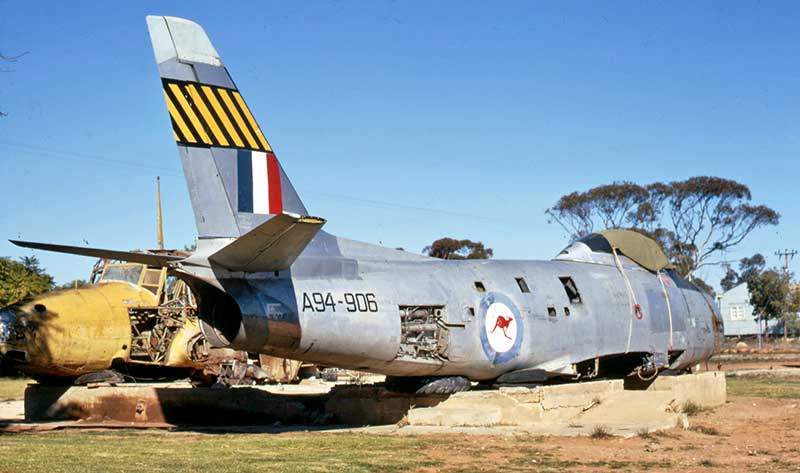
Another CAC CA-27 Sabre Mk.30 A94-906 had been saved from scrapping.
It was later joined at Mildura by A94-989 and the pair later went to Moorabbin Air Museum.
The concrete foundations of demolished RAAF buildings made good display stands.
It was later joined at Mildura by A94-989 and the pair later went to Moorabbin Air Museum.
The concrete foundations of demolished RAAF buildings made good display stands.

In 1989 as the museum was shutting down, both were sold to a US warbird restorer. WZ903 was registered N903WZ
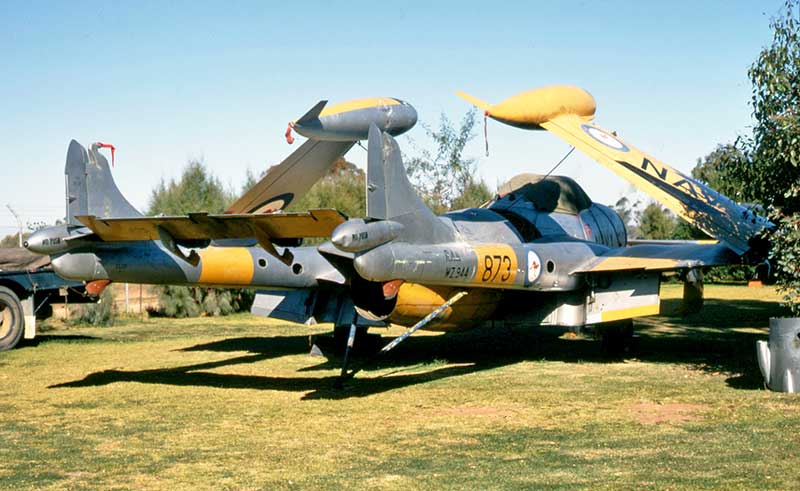
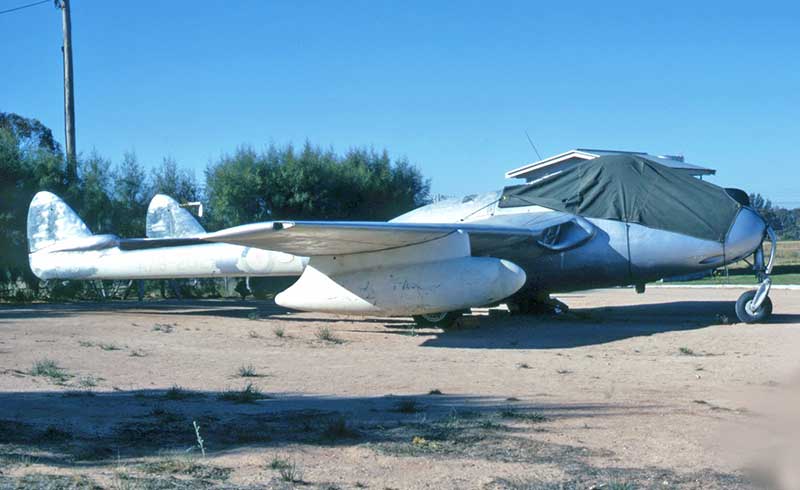
Single-seat DH.100 Vampire FB.31 A79-202 was displayed at a RAAF building in North Adelaide for many years.
When acquired by Pearce Dunn, its all white RAAF scheme was stripped to reveal original markings.
This rare example of the early jet fighter is now in immaculate condition at the SA Aviation Museum at Port Adelaide
When acquired by Pearce Dunn, its all white RAAF scheme was stripped to reveal original markings.
This rare example of the early jet fighter is now in immaculate condition at the SA Aviation Museum at Port Adelaide
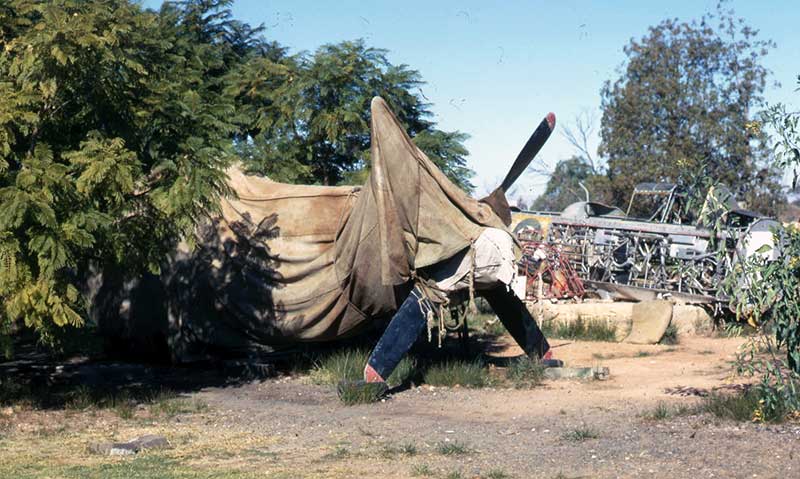
Under tarpaulins was the complete but dismantled CAC Mustang A68-105, stored here for its Melbourne owner.
He had removed it from loan to Moorabbin Air Museum the previous year after a committee policy dispute.
Happily this Mustang flies today as VH-JUC in North African theatre camouflage as "KH677/CV-P"
He had removed it from loan to Moorabbin Air Museum the previous year after a committee policy dispute.
Happily this Mustang flies today as VH-JUC in North African theatre camouflage as "KH677/CV-P"
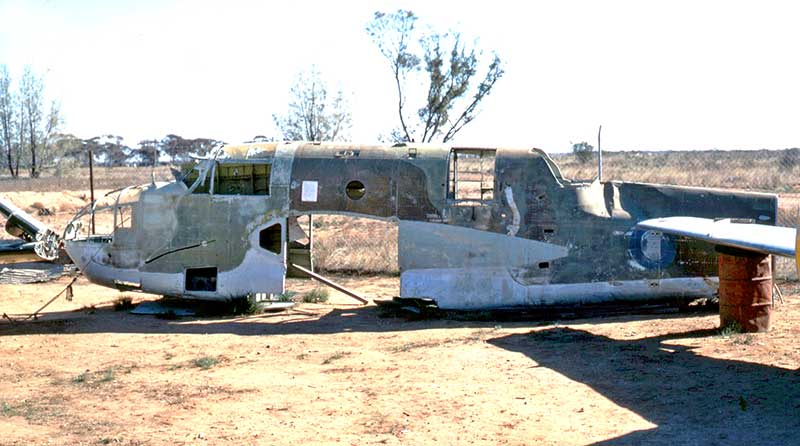
The fuselage of Australian-built DAP Bristol Beaufort Mk.VII A9-141, which was salvaged from a farm near Nhill Vic.
It had ended the war as an instructional airframe at RAAF Nhill and the incomplete airframe was sold to a local farmer.
Passed on to Ralph Cusack in 1985, this Beaufort is today nearing completion of a rebuild to fly in Queensland as VH-KTW
Passed on to Ralph Cusack in 1985, this Beaufort is today nearing completion of a rebuild to fly in Queensland as VH-KTW

This Beaufort cockpit section was among other Beaufort parts collected at the museum.
On left behind is the tail
section of a RAAF Catalina code "T". A complete fuselage and many
Catalina sections were salvaged from
farms across Victoria, coming from post-war disposals sales at RAAF Lake Boga
farms across Victoria, coming from post-war disposals sales at RAAF Lake Boga
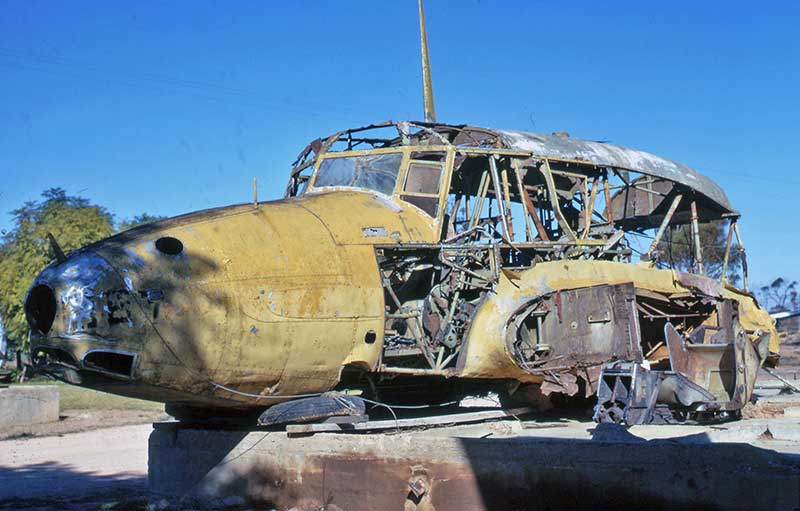
RAAF Avro Anson MG867 fuselage section, nose code "867", was trucked in from an orchard at Kingston-on-Murray,
across the border in South Australia. See Ansons and Oxfords on SA Farms on this site.
across the border in South Australia. See Ansons and Oxfords on SA Farms on this site.
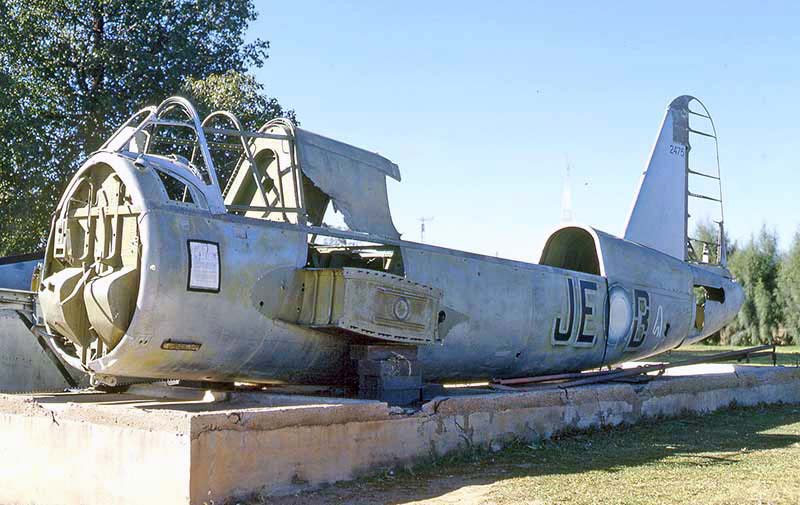
The orchardist intended to make the main float and two under wing floats into canoes on the River Murray.
Pearce later sold this rare Kingfisher and a Catalina to John Bell at Albany WA, where both were restored for display

This Anson was sold by disposals from RAAF Mallala SA and was salvaged from a farm at Clare, South Australia.

City Centre Air Taxi Service DH.104 Dove VH-CTS was damaged in a heavy landing in 1968 then stripped for parts.
Pearce hauled the airframe to
Mildura with plans to restore it to represent a RNZAF Devon, a type he
knew well from his RNZAF days.
However when he later acquired Devon NZ1817, the Dove was used for parts.
As late as 1992, parts were showing up: Ted Rudge at Essendon used its nose section to repair VH-JGZ, one of his fleet of Doves
However when he later acquired Devon NZ1817, the Dove was used for parts.
As late as 1992, parts were showing up: Ted Rudge at Essendon used its nose section to repair VH-JGZ, one of his fleet of Doves